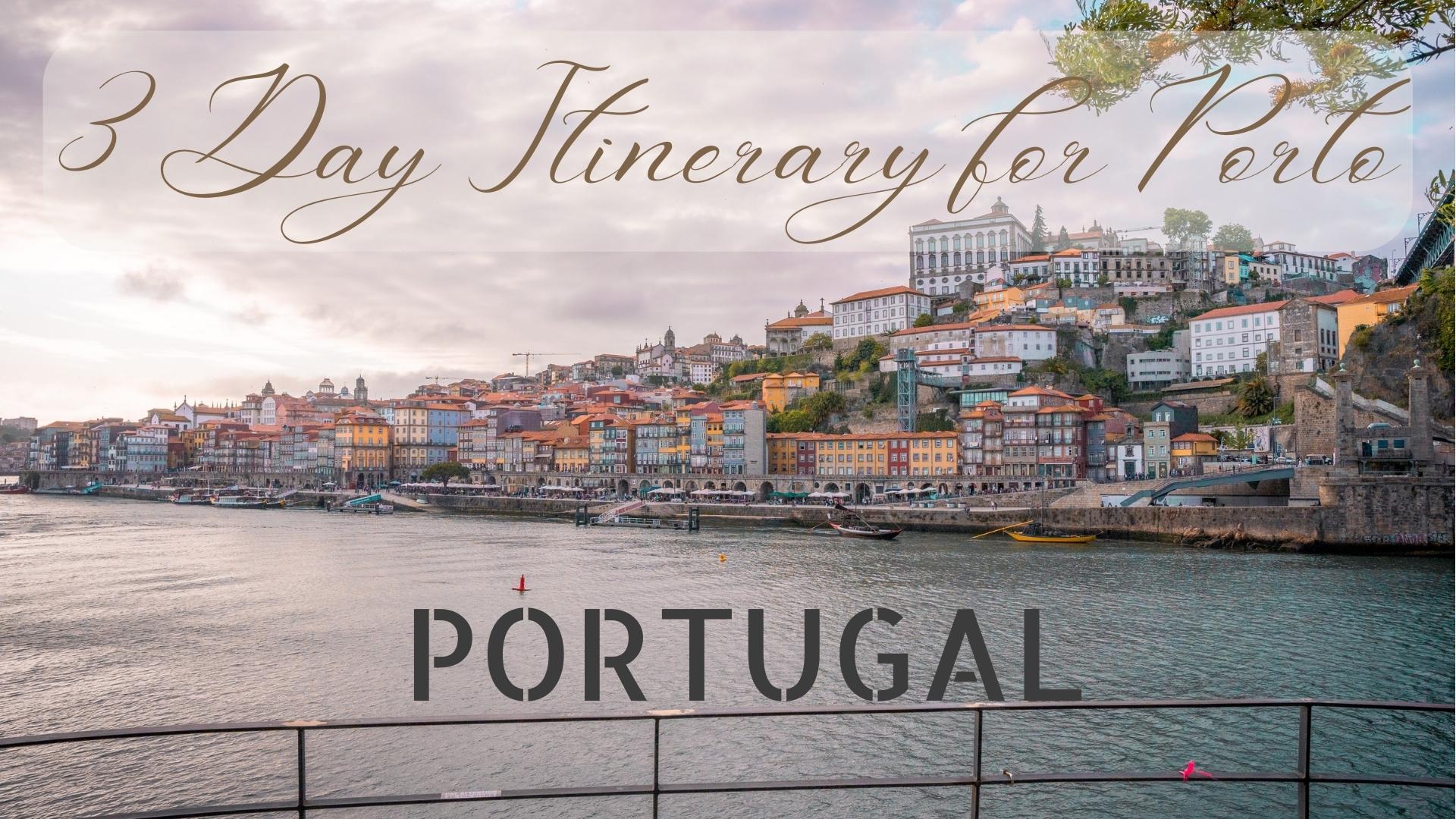
As captivating as the capital Lisbon is, in my opinion, Porto is on par if not more beautiful. The city of Porto in northern Portugal is home to sights and culture galore. Another rising star as a tourist as well as an ex-pat destination. These days it’s considered one of Europe’s best places to visit.
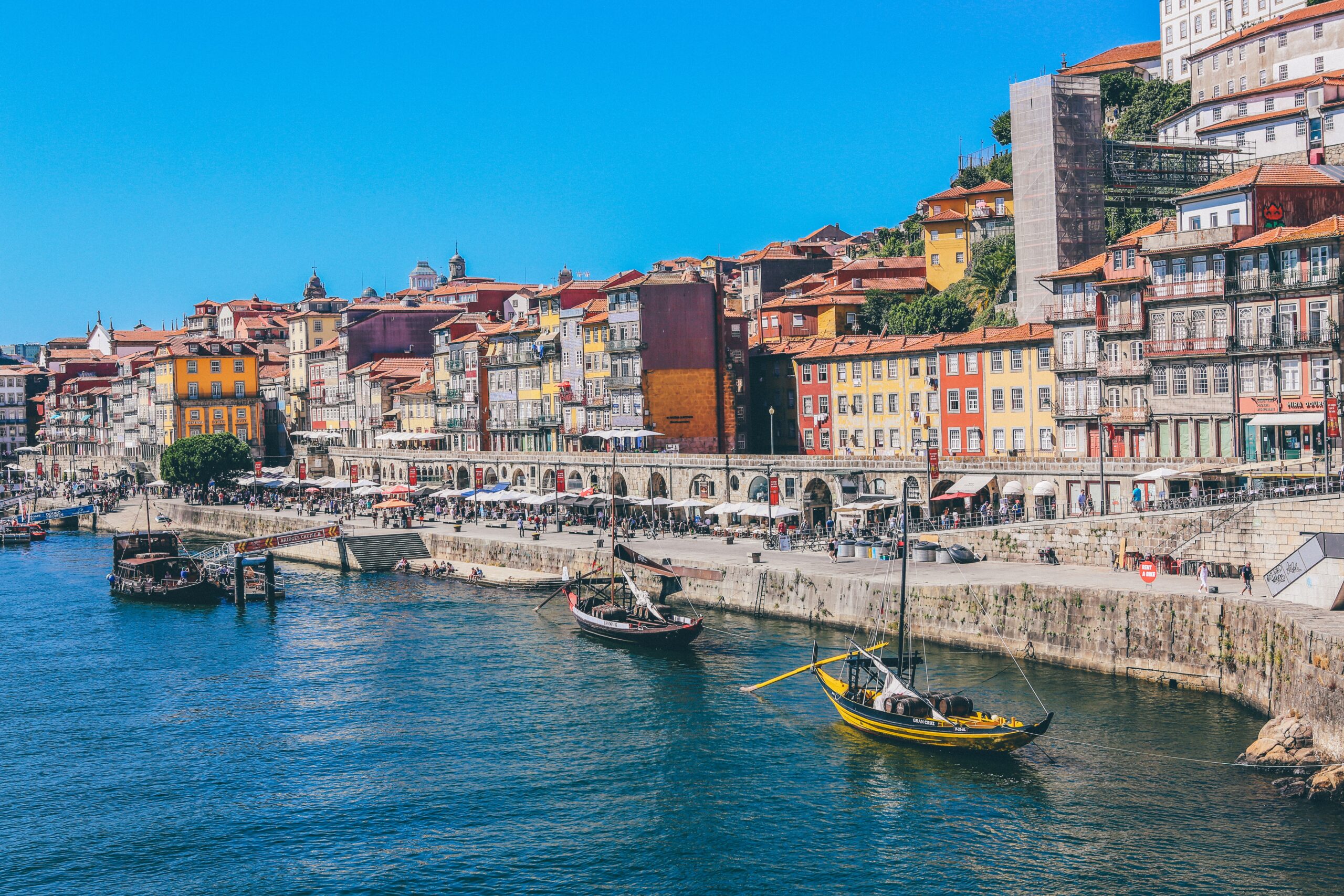
If you are in Portugal and care for a city visit other than Lisbon, Porto will not disappoint you. I have been to Porto numerous times, thanks to my in-laws settled there.
Here I have created a perfect Porto Itinerary that features the best of the city and the Douro Valley region. Sharing my day-by-day guide so that fellow travellers can experience the Top Porto Sights and attractions in 1-5 days. All the details you need to plan your trip are below – what to do, where to stay, when to visit, and more.
I have also curated the Top 10 EPIC Instagram spots in Porto for a quick read, describing all the must-visit spots, when to go and Google map locations.
Best time to visit Porto
The best time to visit Porto is from May to September when the weather is often sunny and warm. Overall, Porto experiences a moderate climate. Summertime temps are high but bearable, and the breezes and nearby beaches will help you stay cool. But tourism in Porto has really taken off in the last decade, and with more and more people visiting, it’s important to pick your time to come carefully. The warm weather brings troves of tourists with it and Porto continues to get busier and busier each summer. This means accommodation availability becomes more limited and prices tend to go up.

Instead, consider visiting Porto during the fall season as the city is just as great to visit between April and May and also later in September and October. These months offer comfortable sightseeing weather and fewer crowds at Porto’s most sought-after attractions. For those reasons, it’s the absolute best time to visit Porto.
How long to spend in Porto?
The ideal sweet spot will be 3 days, 2 days will become a bit hectic and rushed whereas I don’t think the city is big enough for a 5-day trip. However, this itinerary can be extended or made concise based on your requirements.
The first time I went, I spent three days and felt like it was the right amount of time to get a taste of what makes Porto special. You’ll need two days to take in the city’s main highlights, and an extra day to explore the nearby Douro Valley.

Being a relatively small city, it’s possible to pack all of Porto’s main attractions into a day. But this will feel rushed. To appreciate the laid-back atmosphere of this historic city, you’ll want at least 48 hours to explore.
Then on your third day, take a day trip to the Douro Valley. The Douro Valley is a beautiful UNESCO World Heritage Site close to Porto and the birthplace of port wine.
Getting around Porto
In order to cover the best places to visit in Porto, you’re going to have to move around the city a bit. Even though Porto is a hilly city, quite a lot of the attractions revolve around the historic city centre and can be walked between.
But over a weekend in Porto, this can be quite a lot of walking, so it will help if you take advantage of the city’s public transport. Depending on where you’re staying and where you’re going, it may be the only way.
See the sights of Porto and save money with a Porto Travel card valid for 1-4 days. Use the public transport system to get around, and get over 170 discounts and benefits, including free access to 11 museums and a free visit to a port wine cellar.


Where to stay in Porto
Since the city sprawls quite a bit, the best places to stay in Porto are the ones as close to the historic centre as possible. That being said, Porto’s public transport makes it fairly easy to get around, meaning the centre doesn’t necessarily have to be within walking distance. The one big consideration is that Porto is a hilly city and having to walk up a big hill at the end of the day is never fun.
While the city’s riverfront may seem like the obvious choice of where to stay in Porto, you’ll certainly pay dearly for the privilege. For more affordable areas, don’t discount quieter areas like Fontaínhas out to the east or Santo Ildefonso to the north. Whether you choose to walk or take the metro, they’re not far from the city centre. The same goes for Vila Nova de Gaia across the river, which is closer than it may seem.
For the best deals check Booking.com. They continuously offer the best rates and their customer service is on point.
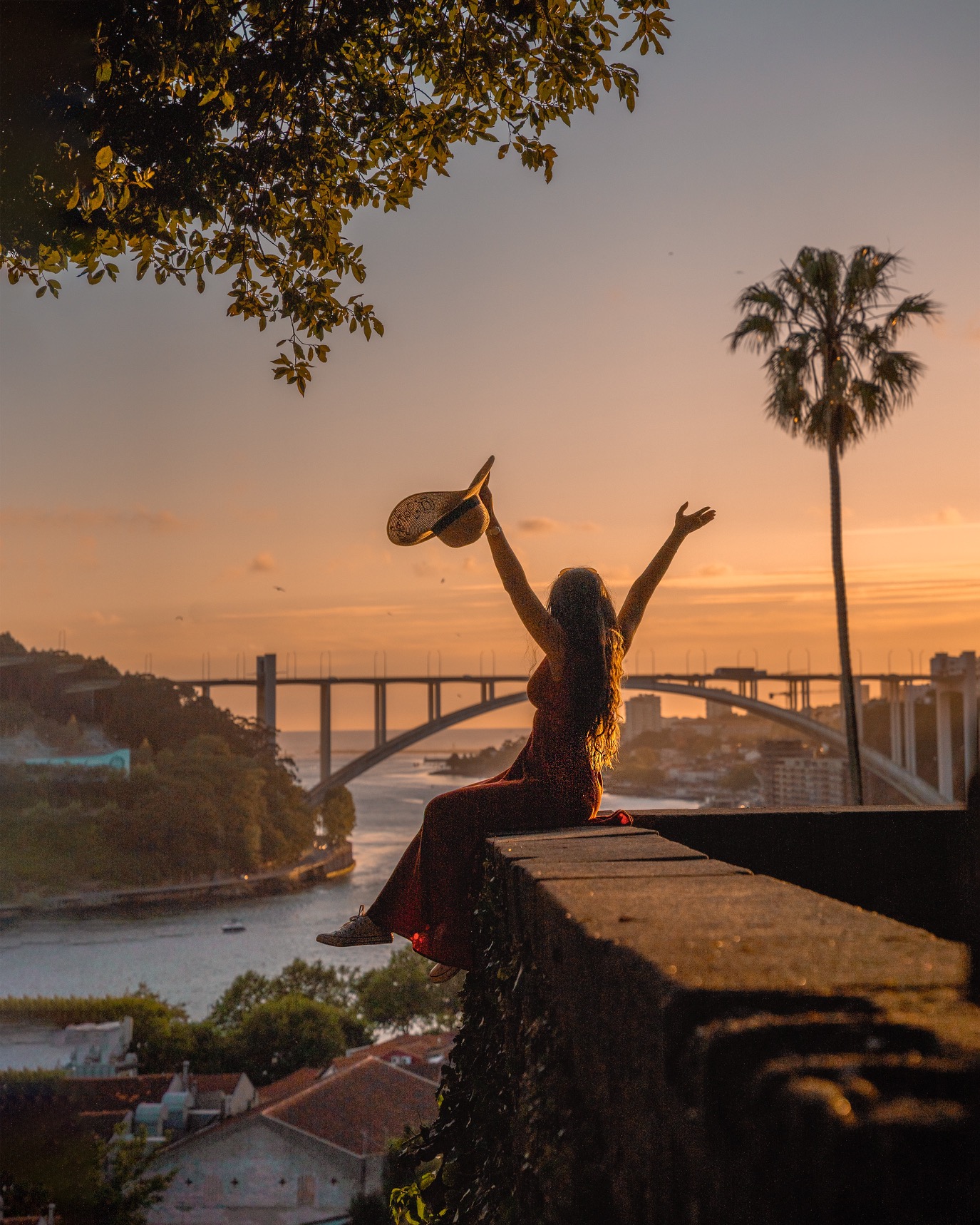

The perfect 3 days in Porto Itinerary
3 days in Porto is a perfect amount of time to experience the best the city has to offer, from exploring the historic city centre to watching a fado performance and wine tasting in the beautiful Douro Valley.
Some facts about Porto:
- Porto is separated from another city called Gaia by River Douro.
- The city resides on hilly terrain, and though it is not as hilly as Lisbon (the city of 7 hills), it will still make you work up a sweat.
- The Douro valley near Porto is best known for its sweet dessert wine called Port.
Day 1

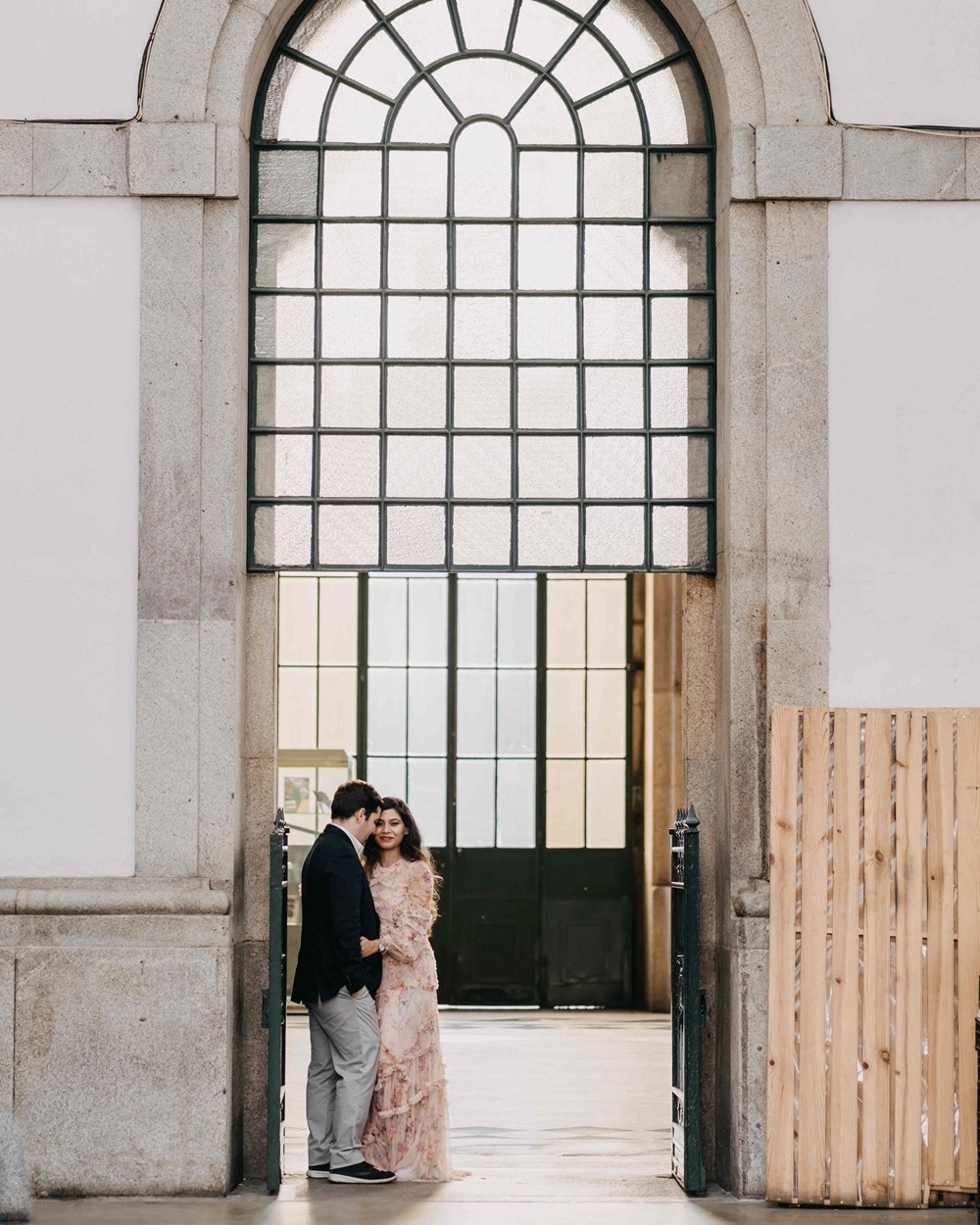
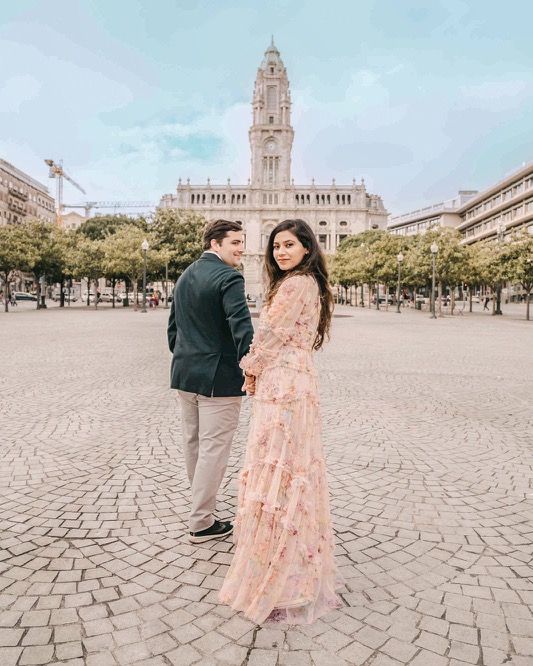
- The first thing I always recommend to do when you land in a city is to take a walking guided tour. They give you complete information on the highlights of the city as well as its history. I love the quirky tidbits that only locals know. Here is my recommendation for a Guided historic tour of Porto.
- After a busy morning walking around the city, you’ll no doubt be hungry and ready for a well-deserved lunch. So it’s time to try your first Portuguese delicacy – the bifana. A bifana is a traditional Portuguese sandwich consisting of a soft bread roll filled with thin slices of marinated pork and plenty of mustard and Piri-Piri sauce. No one is quite sure of the origins of the dish, but today the sandwich is one of the most popular fast foods in Portugal. One of the best places you can try it is in Conga.
- After a hearty lunch if you still have some space for dessert, then I would definitely recommend grabbing a Nata from Mantegaria Porto
- See some Beautiful Tiled Churches: By now you would have probably already noticed the city’s many exquisite tiled churches. But just in case you didn’t, there are a bunch to discover around the Old Town, here are the must-see:
1. Capela das Almas – This small chapel is famous for its striking blue and white tiles painted with scenes from the lives of saints. The church has become one of Porto’s most photographed landmarks.
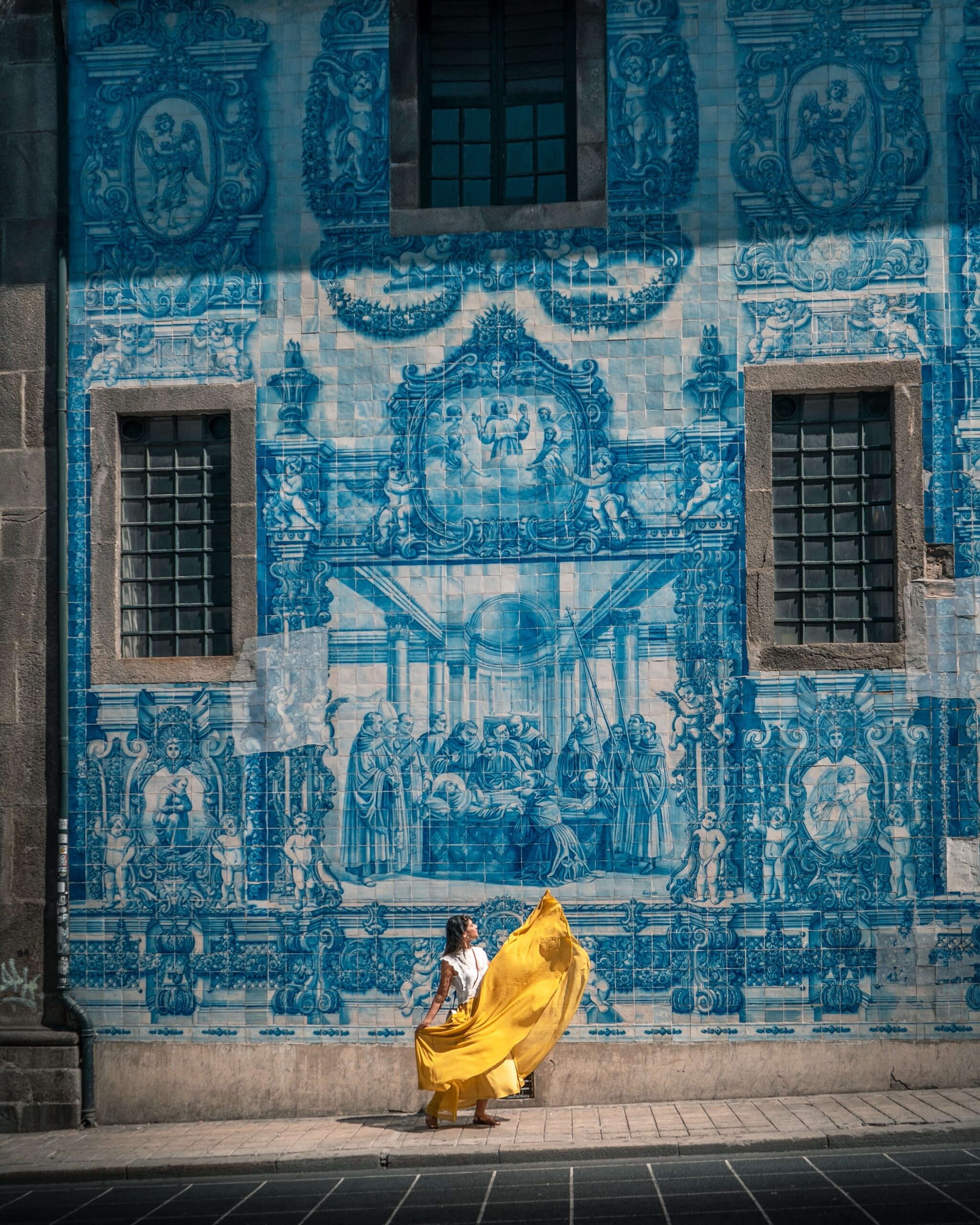
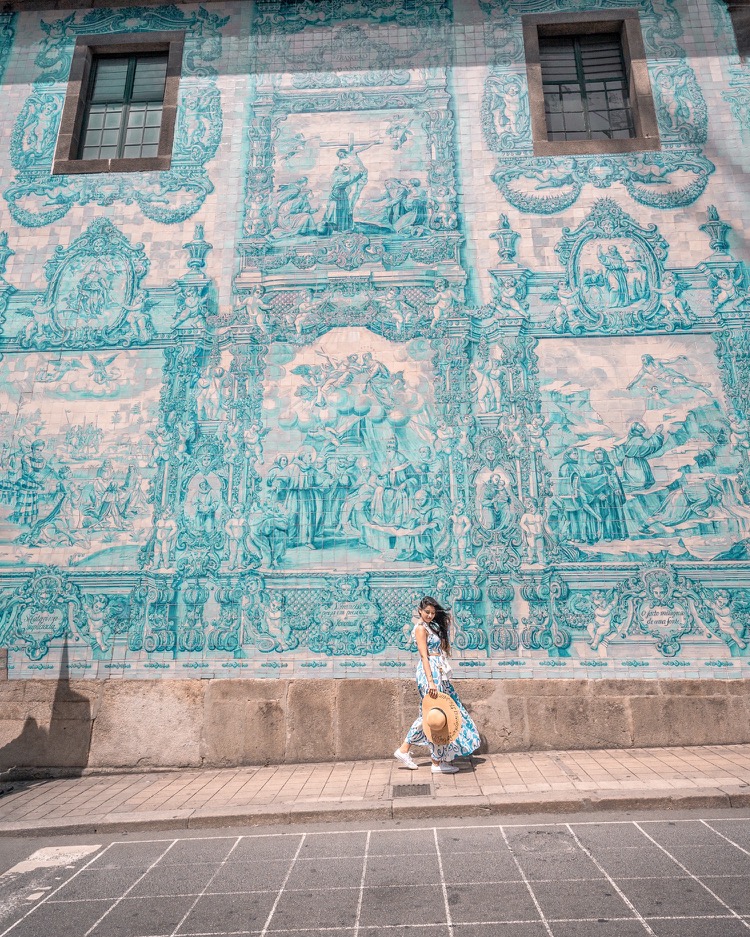
2. Igreja de Santo Ildefonso – A baroque 18th-century church at the top of a hill in Old Town with azulejo blue and white painted ceramic tiles.


3. Igreja dos Carmelitas & Igreja do Carmo – These two connected 16th-17th century churches feature orate granite facades with beautiful tiled walls. The lavish Baroque and Rococo-style interiors of Igreja do Carmo are worth visiting.
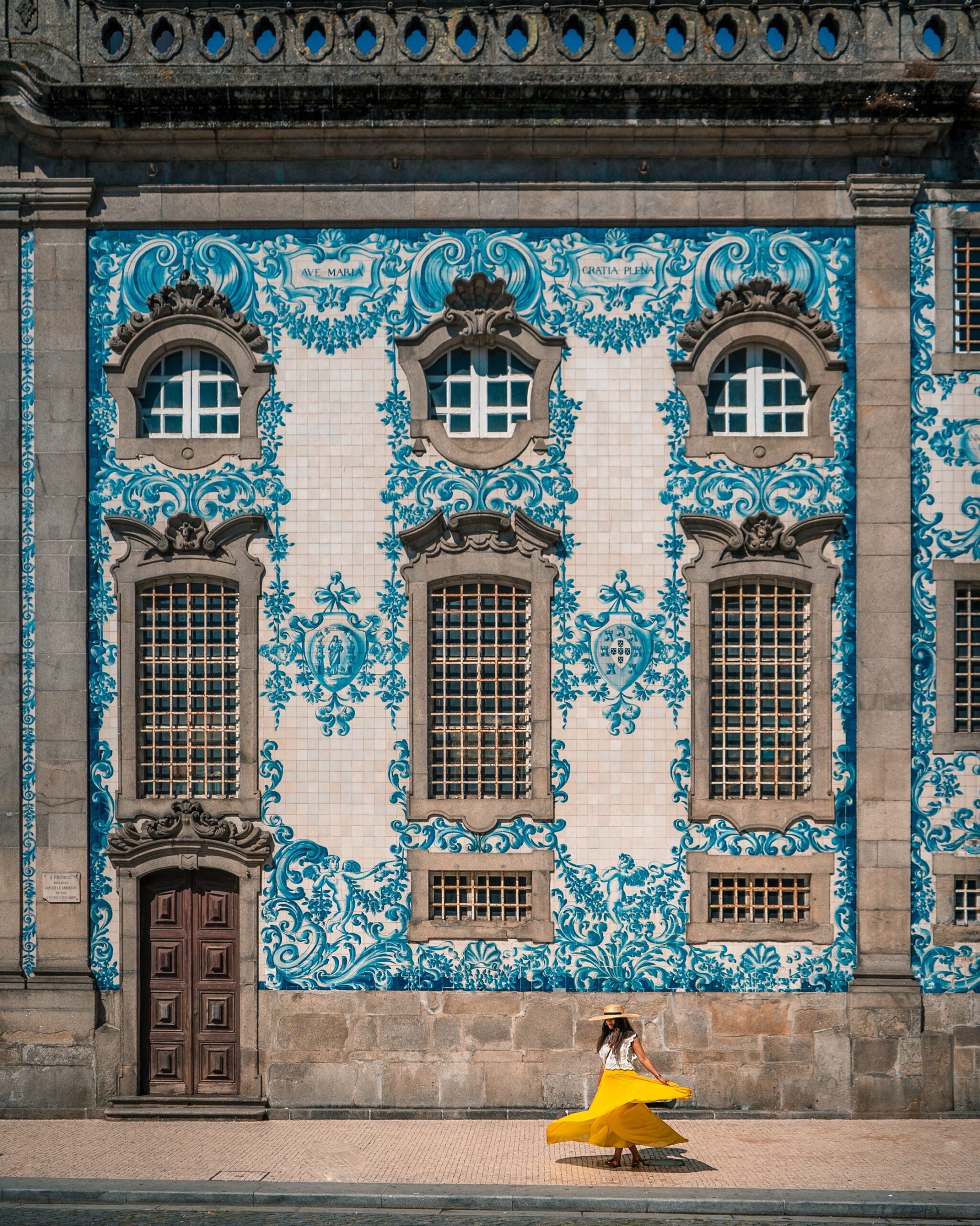
For all the locations refer to the Top 10 EPIC Instagram spots in Porto post.
- Livraria Lello: the iconic bookstore from which JK rowling got inspired – Livraria Lello is often described as the most beautiful bookshop in the world. And it’s pretty hard to disagree. Dating back to 1881, the bookshop is famous for its lavish neo-Gothic and Art Nouveau interiors. Its grand staircases, elaborately carved archways and columns, floor-to-ceiling bookshelves, and elegant stained-glass skylight are truly a sight to behold. It was rumoured that J.K. Rowling drew inspiration from Livraria Lello when she was in Porto crafting the first drafts of her now-famous books. I definitely recommend booking tickets online in advance to beat the long tourist queue(€5 online and €6 at the entrance on the day). The ticket prices can be used to discount books if you buy them from the store.



- Sunset at Miradouro da Vitória: Rather than heading for one of the more obvious and popular ones, start with the Miradouro da Vitoria. Hidden in an empty lot behind a church above a rather concealed staircase. From Miradouro da Vitória, you’ll be treated to amazing panoramic views over many of the city’s major landmarks, including the Cathedral, Bishops Palace, Douro River, and Dom Luis I Bridge. It does get pretty busy around sunset, so you will have to share the viewpoint with others.

- End the day taking a river cruise on the Douro listening to the 6 bridges and the history of Porto
Day 2
- Start the day with a tour of Palacio da Bolsa – A Neoclassical 19th-century palace built as the headquarters of Associação Comercial do Porto and used to host official state receptions and visiting representatives. The majestic palace is classified as a National Monument and a UNESCO World Heritage Site. When it’s not being used for official business, you can visit the architectural jewel of Porto on a 30-minute guided tour. Head there early or book in advance to know when the English tours happen and enrol yourself (there are set times for English, French and Portuguese tours).
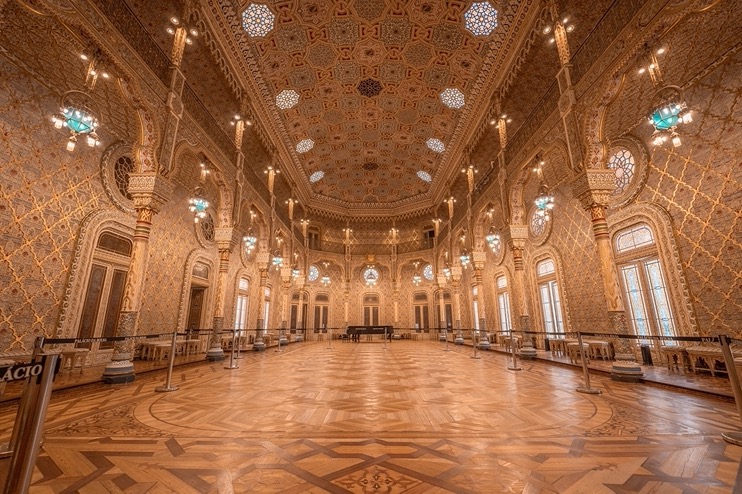
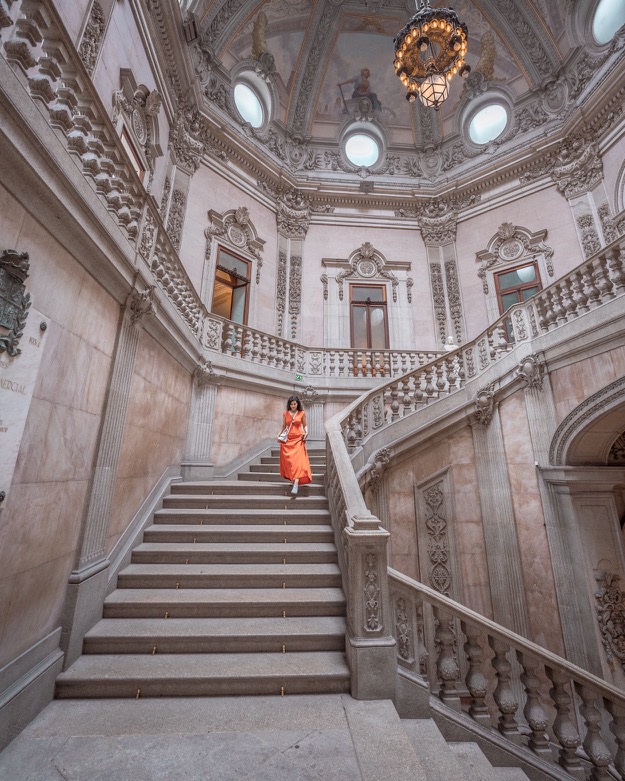
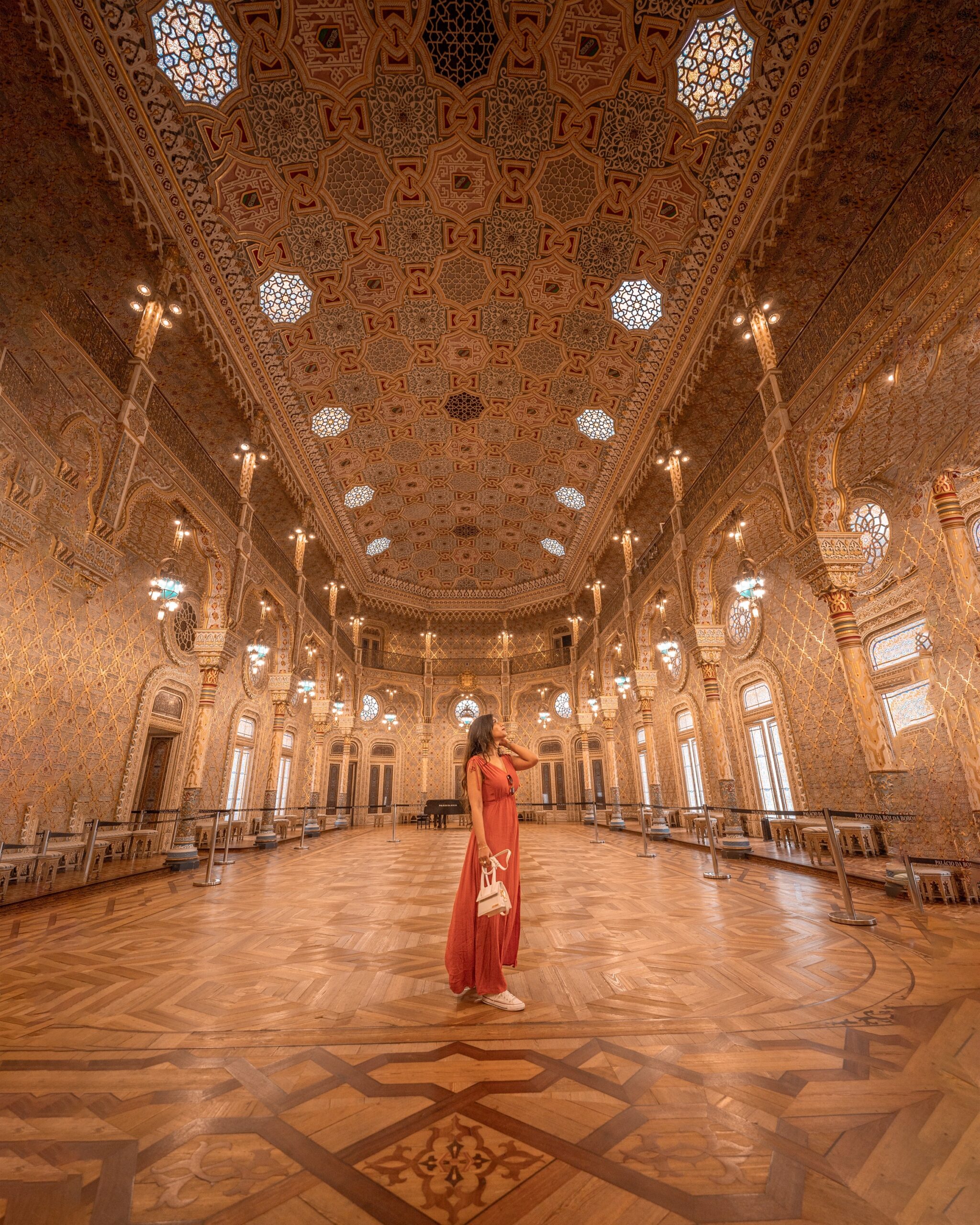

- Porto Cathedral: a visit to Porto Cathedral, or Sé do Porto as it’s known locally, is a must. Standing on the top of a hill in the historic centre, the large Roman Catholic Church is the most important religious building in the city. The fort-like Cathedral was constructed in the 12th century, making it one of the oldest buildings in Porto, and has been renovated several times throughout its history. Stepping inside, you’ll see the stunning mix of Baroque, Romanesque, and Gothic architectural styles that make the church so unique. The Cathedral is free to visit, while a ticket to its cloister costs €3. The Gothic cloister is one of the highlights of the church and definitely worth paying for. Dating back to the 14th century, it’s decorated with beautiful blue and white azulejos tiles painted depicting scenes from the Bible.





- By now if you are hungry, I definitely recommend checking out Majestic cafe, one of the oldest cafes. Though it is a bit on the costlier side, the interiors are worth fawning over.
- Walk on Ponte Luis I bridge: From Porto Cathedral, turn onto Calçada de Vandoma then Av. Vimara Peres to reach the upper walkway of the Ponte Luis I Bridge. Ponte Luis I Bridge connects Porto and Vila Nova de Gaia over the Douro River and is one of the city’s most recognizable landmarks. The impressive bridge was designed by German architect Téophile Seyrig, a disciple of French engineer Alexandre Gustave Eiffel (the designer of the Eiffel Tower). When it was completed in 1886, it was the longest-spanning metal bridge in the world. Ponte Luis I was an architectural marvel of its time.

- Miradouros of Vila Nova de Gaia: Shortly after crossing the upper level of Ponte Luís I to Vila Nova de Gaia, you’ll reach several incredible viewpoints or ‘miradouros’ in Portuguese. It is a large terrace of the 15th-century hilltop monastery of the same name. From this viewpoint, you’ll get a unique perspective over the Ponte Luis I bridge, down to the historic harbour, and over the rooftops of Porto on the opposite riverbank.
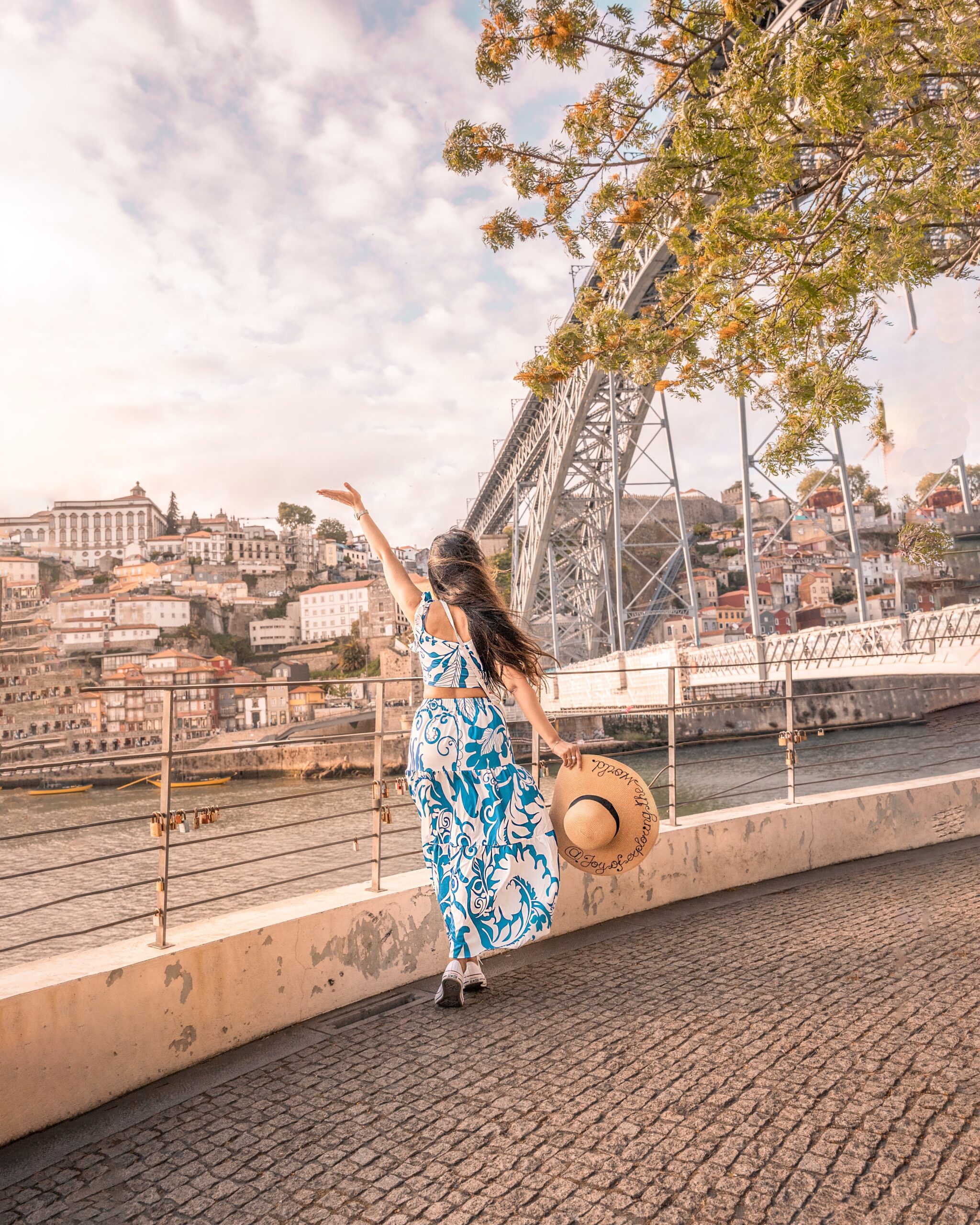
- Get to know the history of wine in the immersive museum experience in WOW.
- If you have some time and want to see another sunset viewpoint then I definitely recommend Palacio de Cristal. It is free to enter for any amount of time.



- End the day listening to Fado and drinking port. The best way to immerse yourself in a truly Portugese tradition is by listening to their music. The best songs are the ones expressing the feeling of Saudade.
Day 3
- Definitely recommend going to Douro valley, making a day trip and immersing yourself to plenty of traditional Portuguese cuisine and a lot of wine tasting. The region is not the easiest place to visit on your own, hence a guided tour of the Douro would be the best.
- Located 100km east of Porto, the Douro Valley is home to the many vineyards and wineries that produce port wine. The region is a UNESCO World Heritage Site and the oldest determined (DOC) wine region in the world.
- The enchanting vineyard-dotted countryside is also known for its stunning scenery, great hiking routes, and picturesque towns and villages nestled on the banks of the winding Douro River. One of the most interesting parts of the Douro Valley is the terraced vineyards
Where to eat?
- Porto Bifana from Conga
- Pastel de nata from Mantegaria Porto
- Coffee in Majestic cafe ( because everything else is quite expensive 😀 )
- In Portugese cuisine –
- Francesinha Porto Sandwich – this is so popular that now there is both veg and non-veg versions of this sandwich. A staple of Porto cuisine and listed on nearly every cafe and restaurant menu in the city, the Francesinha is the mother of all sandwiches. O Afonso is ranked as one of Porto’s best restaurants for a Francesinha – and it does not disappoint!
- Bacalhau com Natas – Dried and salted cod – called Bacalhau in Portuguese – is a very traditional food in Porto; in fact, it is the national dish of Portugal. Try it from the namesake Bacalhau do Porto at the Mercado Beira-Rio along the waterfront in Vila Nova de Gaia.
- Rotisserie Chicken Porto Style (with Piri Piri Sauce) – Pedro dos Frangos is consistently ranked as one of the best restaurants in Porto, Portugal for rotisserie chicken
Final thoughts
Lastly, I would recommend wearing good pair of walking shoes, no matter which season you visit Porto. If you visit Porto at the end of Summer then do watch out for the sunsets over Luis I bridge, they are the most gorgeous sunsets I have ever seen after the sunset in Gilli islands, Indonesia.
For hitting all the top spots in Porto, knowing the best time to go, the best photography angle as well as having Google locations at your fingertips, refer to this – Top 10 EPIC Instagram spots in Porto
If you have any questions or suggestions or if you want to chat anything about Porto, do reach me through the comment section.
I always love helping you out and chatting about all things travel.
Keep that dream alive!!
Pin it




